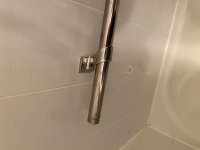Megger helped me find a fault at my parents. Gas line installers nailed a wire in the wall. They pulled the nail so it was no longer a dead short. Megger let me know which wire had taken the hit so rewire was faster and easier.A Wheatstone bridge is handy for locating ground faults. Invented by a guy named Christie and improved by Wheatstone in the mid 1800's, they still work today. In a pinch, a voltmeter and battery can do the same thing if you know math.
I've used wheatstone bridges long ago for strain gauges. I've never tried using one for fault finding. I used to have one but I think I got rid of it.




















